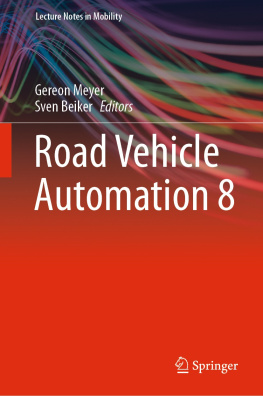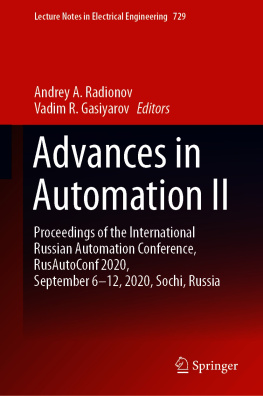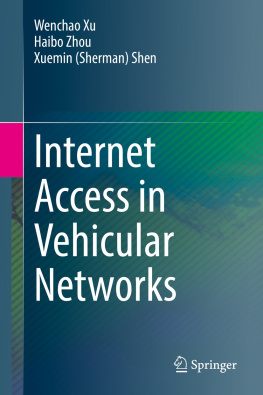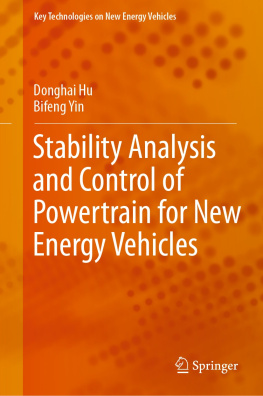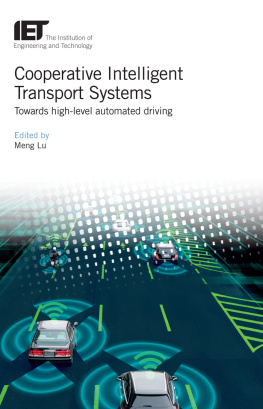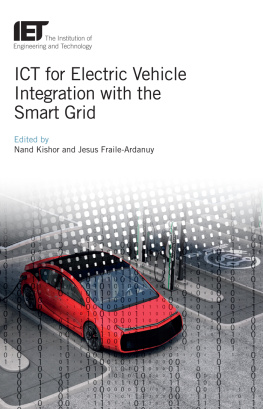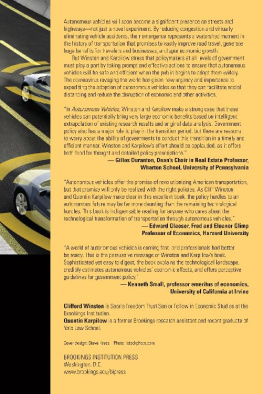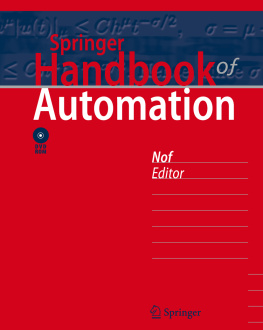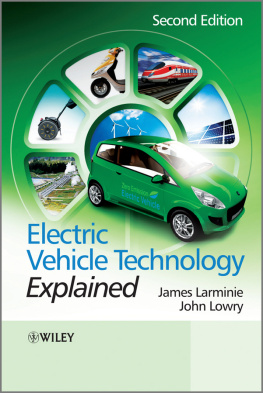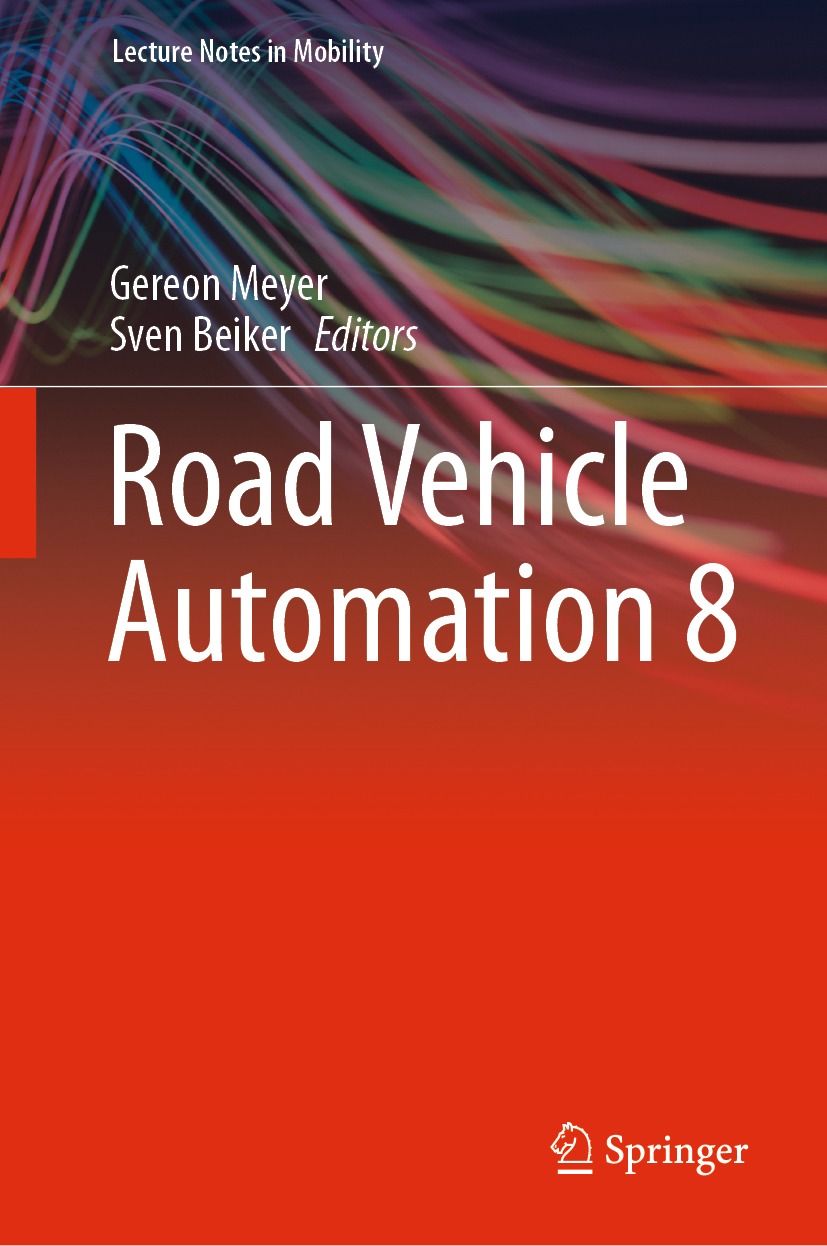Lecture Notes in Mobility
Series Editor
Gereon Meyer
VDI/VDE Innovation + Technik GmbH, Berlin, Germany
Lecture Notes in Mobility (LNMOB) is a book series that reports on the latest advances in research, development and innovations for the intelligent, connected and sustainable transportation systems of the future, comprising e.g.:
Electric and hybrid vehicles
Energy-efficient vehicles
Alternative and optimized powertrains
Vehicle automation and driver assistance
Clean and intelligent transportation systems
Interfaces with transportation networks and power grids
Mobility services
Business models
Public policy
LNMOB publishes edited conference proceedings, contributed volumes and monographs that present firsthand information on cutting-edge research results and pioneering innovations as well as new perspectives on classical fields, while maintaining Springers high standards of excellence. Also considered for publication are dissertations and other related material of exceptionally high quality and interest. The subject matter should be original and timely, reporting on the latest developments in all areas covered by this series. Concerns about climate change, air quality and energy security have sparked a paradigm shift regarding the transportation of passengers and goods. Vehicle technologies are now changing radically towards higher energy efficiency and the use of alternative fuels. At the same time, transportation is increasingly managed in a smart manner, connecting a multitude of modes and making use of a variety of energy sources. Moreover, vehicles are becoming more and more assistive and autonomous, which will lead to even higher efficiency, fewer fatalities and more convenience. These developments are to be supported by novel services, processes and value creation, as well as by suitable public policies. LNMOB identifies the most promising conceptual work, groundbreaking findings and innovations from the industrial engineers and academic experts in this field. The overall aim of this series is the exchange of ideas to strengthen the scientific community, to create new value chains and to accelerate the move towards sustainable transportation systems (road, rail, water- and airborne) around the globe. Public research funding programs in Europe, America and Asia represent an important source of content. The selection of work for publication is done under the supervision of an international scientific advisory board that brings together some of the most influential technology leaders and scholars of our time. The target audience primarily consists of industry professionals and academic researchers working at the forefront of their fields, but the book series will also be of interest to advanced level and PhD students.
More information about this series at http://www.springer.com/series/11573
Editors
Gereon Meyer and Sven Beiker
Road Vehicle Automation 8
1st ed. 2022

Logo of the publisher
Editors
Gereon Meyer
VDI/VDE Innovation + Technik GmbH, Berlin, Germany
Sven Beiker
Stanford University, Palo Alto, CA, USA
ISSN 2196-5544 e-ISSN 2196-5552
Lecture Notes in Mobility
ISBN 978-3-030-79818-5 e-ISBN 978-3-030-80063-5
https://doi.org/10.1007/978-3-030-80063-5
The Editor(s) (if applicable) and The Author(s), under exclusive license to Springer Nature Switzerland AG 2022
This work is subject to copyright. All rights are solely and exclusively licensed by the Publisher, whether the whole or part of the material is concerned, specifically the rights of translation, reprinting, reuse of illustrations, recitation, broadcasting, reproduction on microfilms or in any other physical way, and transmission or information storage and retrieval, electronic adaptation, computer software, or by similar or dissimilar methodology now known or hereafter developed.
The use of general descriptive names, registered names, trademarks, service marks, etc. in this publication does not imply, even in the absence of a specific statement, that such names are exempt from the relevant protective laws and regulations and therefore free for general use.
The publisher, the authors and the editors are safe to assume that the advice and information in this book are believed to be true and accurate at the date of publication. Neither the publisher nor the authors or the editors give a warranty, expressed or implied, with respect to the material contained herein or for any errors or omissions that may have been made. The publisher remains neutral with regard to jurisdictional claims in published maps and institutional affiliations.
This Springer imprint is published by the registered company Springer Nature Switzerland AG
The registered company address is: Gewerbestrasse 11, 6330 Cham, Switzerland
Preface
Without any doubt was 2020 an exceptional year, and 2021 continues to do so. Much has been discussed during those times in terms of what automated vehicles (AV) can contribute during critical situations like a pandemic and beyond. It was supposed that driverless vehicles would be very well suited to arrange for contactless delivery of goods and transportation of people. But, one also needs to attest that at a time where the normal traffic ceased, people kept distance all-around, and home delivery became the default; AVs were seemingly not yet ready to step up and fulfill their promise. This raises the question of how mature the promised future of transportation actually is. Rightfully so, as further progress in the technologies for environment perception, intention recognition and decision making, more real-world trials and further discourse on impacts and framework conditions will be needed to finally enter the intriguing world of level 4 automation.
In that sense, we are thankful for the contributions to this eighth edition of the Road Vehicle Automation books from our very much appreciated authors who tackle topics in technology, policy, business and other disciplines that all need to work together to make automated vehicles a reality. All those individuals make sure that we keep documenting the progress in road vehicle automation as it was discussed at the Automated Vehicle Symposium (AVS), held as a virtual event in July 2020. And while those contributions show great progress in their respective fields, we are also very appreciative of the unanswered questions and recommendations for further work that the authors point out.
While this book might feel a bit lighter than the previous seven volumes, we are heavily indebted to the contributors who dedicated their time during the unprecedented year that 2020 was. We do not want to rule out that, despite of the challenges of the pandemic, the consolidation that seems to have reached the automated vehicle sector might have an influence on the contents covered in this book; however, we also maintain that companies are moving closer to deployment and therefore relevant subjects get more proprietary and in return less talked about. To this effect, we absolutely observe that the field of road vehicle automation is as vibrant as ever, has more applicability than ever and might be as close to deployment as never before.

